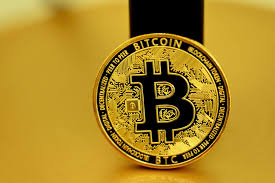- The U.S. March CPI dropped to 2.4%, sparking optimism as inflation slows and Bitcoin surged past $82K.
- The decrease in inflation could lead to more stable markets and lower interest rates, boosting investor confidence.
In a surprising twist for the U.S. economy, the March Consumer Price Index (CPI) has dropped to 2.4%, slightly below analysts’ expectations of 2.5%. This lower-than-anticipated inflation figure, following President Trump’s temporary halt on tariffs, has sparked optimism across financial markets. The unexpected CPI decrease is fueling renewed confidence in both traditional and cryptocurrency markets, with Bitcoin leading the charge.
Also read: How Trade Tensions and Tariffs Could Drive Bitcoin Adoption, According to Grayscale
The March CPI report from the Bureau of Labor Statistics reveals a 0.1% decrease in inflation for the month, defying predictions of a 0.1% increase. This signals that inflation, which had been a growing concern in recent months, may be slowing down—bringing relief to consumers and businesses alike. The year-over-year CPI has steadily fallen from 3.0% in January to 2.8% in February, and now to 2.4% in March.
For investors, this drop in inflation could be a game-changer. With inflation coming under control, the Federal Reserve may reconsider its stance on interest rates. If inflation remains low, the central bank might delay future rate hikes or even consider cuts—helping reduce borrowing costs and boosting investor sentiment.
One key indicator of this positive momentum is the performance of cryptocurrencies. Bitcoin, often seen as a hedge against inflation, surged by 7.02%, crossing the $82,000 mark. Ethereum followed suit with a 10% increase, while other altcoins like XRP, SOL, DOGE, and ADA also saw impressive gains. The crypto market’s enthusiastic response suggests that investors view this inflation slowdown as a signal for stronger returns on riskier assets.
The cooling of core CPI, which excludes food and energy prices, is also notable. It fell to 2.8%, below the expected 3%, indicating that inflationary pressures are easing beyond volatile sectors.
While uncertainty around Trump’s tariff policies persists, the overall sentiment is positive, and markets are looking ahead to more stability in the coming months. Whether this rally continues remains to be seen, but the March CPI data has certainly sparked a wave of optimism across the board.




